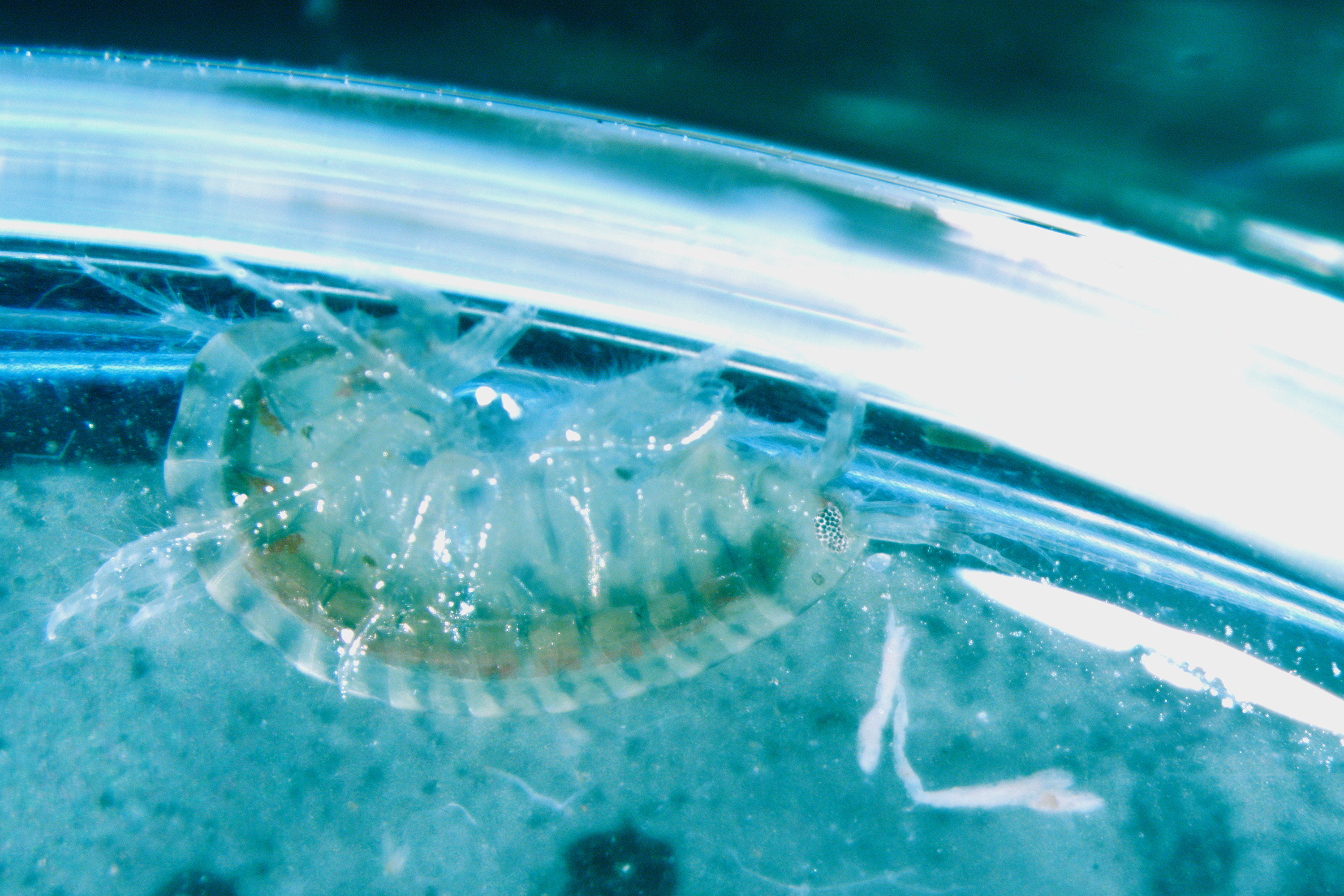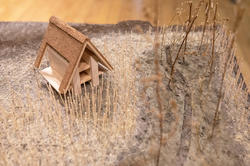Students in two spring 2023 studios used scientific methodologies combined with design thinking to explore collaborative future living.
New RISD Seminar Created as Part of Research Partnership with Hyundai Motor Group

How can we apply the strategies we observe in the natural world to our own design research? Why have the characteristics of living creatures evolved in the ways that they have? These are the kinds of questions students are asking in a fall seminar called The Language of Design in Nature: From Form to Regeneration.
The course is part of RISD’s ongoing collaboration with the Hyundai Motor Group (HMG). Now in its fifth year, the partnership—called the Regeneration Studio—brings together the staff expertise and scientific resources of RISD’s Edna W. Lawrence Nature Lab with a growing group of faculty and student researchers and Hyundai, Genesis and Kia designers using biodesign to explore a different theme each year. This year’s theme is “Future Structures.”
The fall research immerses students in nature’s structures and designs and includes an expert panel discussion of biomimicry, multiple lectures and field research trips led by Nature Lab scientists Ben Gagliardi and Jen Bissonnette, and the study of Indigenous practices centered around ecological kinship. Previous courses focused on such themes as adaptive ecologies, sustainable futures and collaborative future living.


“The larger question we’re investigating is what happens when research is conducted by artists and designers who have been given training in scientific observation and access to the world-class tools, materials and mentorship available through the Nature Lab,” says Vice Provost for Strategic Partnerships Sarah Cunningham. “We are grateful that Hyundai Motor Group is providing the next generation of designers with this extraordinary opportunity to think about regenerative design as they launch their careers.”
The fall course introduces various aspects of design in natural systems, including materiality of form, biomimicry, environmental and social systems, biophilia, life cycle analysis, regeneration and Indigenous science. It is led by Associate Professor Nicole Weber, an expert in environmental biology and engineering education, along with an interdisciplinary team of RISD faculty members including Max Pratt 19 FD/MID 21, Eliza Squibb 13 TX and Nature Lab Hyundai Motor Group Biodesign Fellow Jessica Smith.
On a sunny fall afternoon, the class gathered at the Old Slater Mill National Historic Landmark in Pawtucket, RI, just north of Providence, where park ranger Kevin Klyberg led them through the original mill building and fielded questions about its history. The class is interested in systems thinking and the historical ramifications—many of them disastrous—of the choices made by early manufacturers.


Slater Mill, which opened in 1793, was the first water-powered textile mill in the US and employed more than 200 laborers during its heyday in the early 1800s. Entire families of laborers, including children as young as eight, worked at the mill, turning raw cotton into yarn. Its commercial success revolutionized the textiles industry and changed the face of Rhode Island. It also turned the Blackstone River—the source of its power—into the most polluted river in the country, clogged with untreated sewage, detergents, solvents, heavy metals, dyes and other industrial wastes.
Pratt describes the destructive operation as the opposite of sustainable/regenerative design, adding, “it’s an excellent example of how we got to where we are today in terms of environmental degradation.”
After examining the ancient mill machines on view inside the building, the class moved outside to engage in an ecological assessment, using aquatic macroinvertebrates as indicators of the Blackstone’s water quality upstream and downstream of the original mill building. As Weber explains, “A healthy stream or pond is a dynamic system and home to many living organisms. One way to assess the health of the system is to study the organisms living in it: biotic indicators of water quality.”
Pratt advised the students to don gloves before handling the toxic water and clarified that the goal is to gather both micro and macro invertebrates. With the help of senior Alex Gorvitovskiy 25 ID, they then threw a bucket into the river, drew it back to the river’s edge with the attached rope and poured the first water sample into a white tray for the rest of the class to scrutinize.


“This guy is so tiny!” one student observed as she used a plastic spoon to move the creature from the larger collection tray into a plastic ice-cube tray Weber provided for sorting purposes. The team also brought loupes to the site to make identifying the various species easier, although they later studied samples under a microscope at the Nature Lab.
The class has been engaging in this kind of scientific observation throughout the semester, conducting field research in places like the Big River Management Area in West Greenwich, RI and Tillinghast Place, RISD’s beachfront property in Barrington, RI. The seminar is a prerequisite for Regeneration Studio courses planned for the coming spring in which students will continue to work directly with nature’s systems to rethink our future mobility.
“We’re observing natural systems of regeneration through an interdisciplinary design lens and integrating these same elements into potential solutions to current environmental issues,” Weber explains. “Good design is key for life on this planet, and we’re focused on moving away from the destructive, colonial and extractive practices of the past.”
Learn more about RISD’s partnership with the Hyundai Motor Group.
Simone Solondz / top photo by Jessica Smith
November 11, 2024


